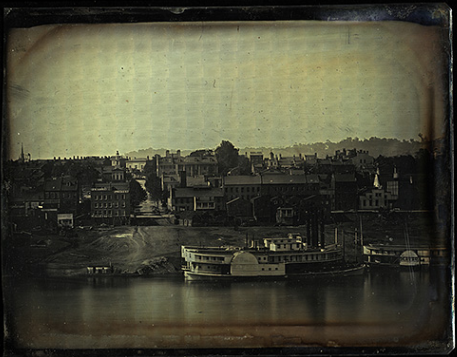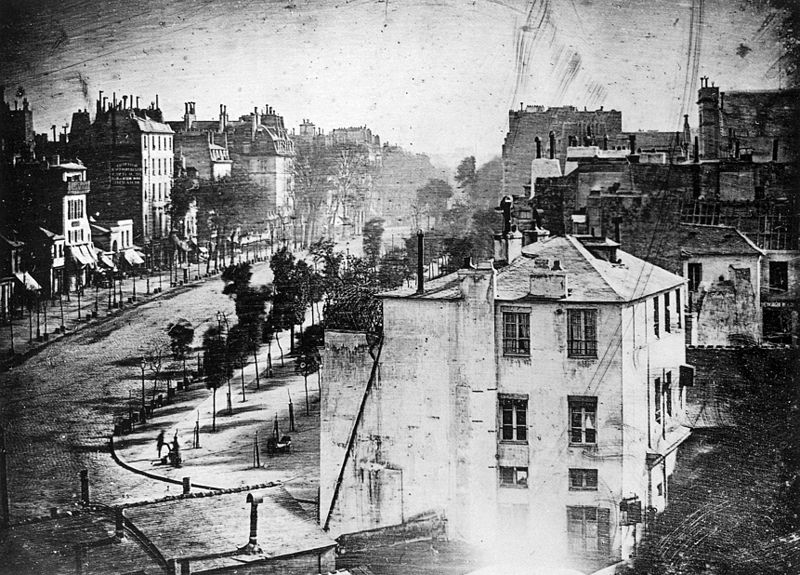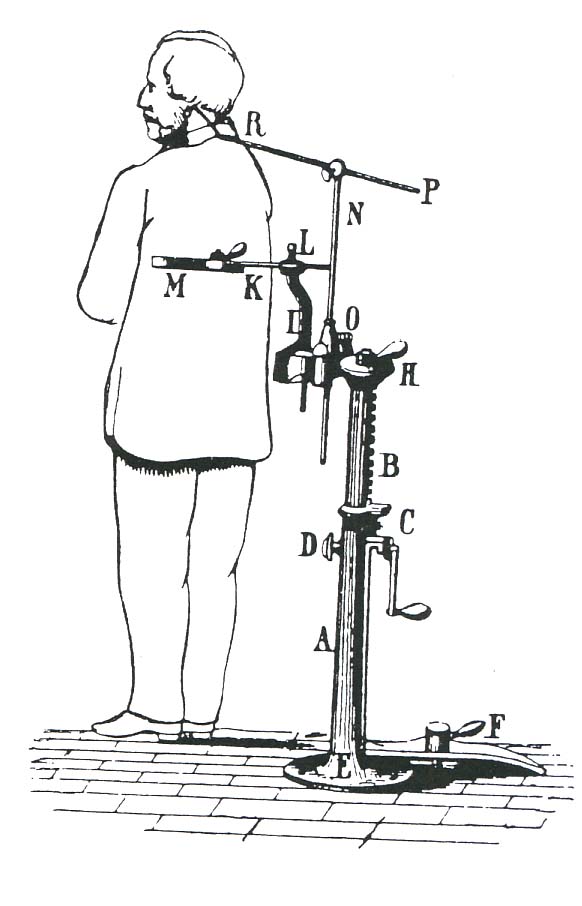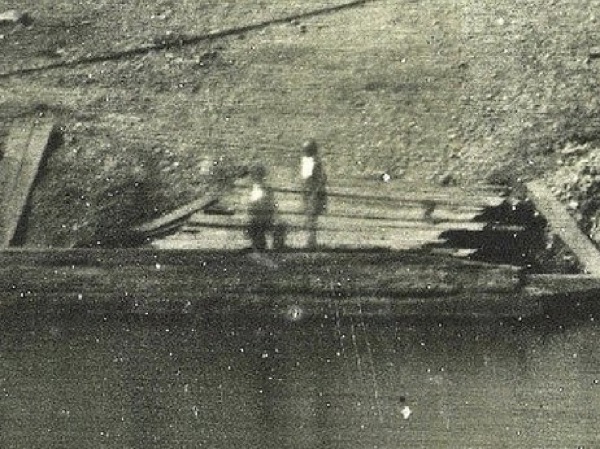
As reported by NPR's Robert Krulwich last month, the photo was taken by Charles Fontayne and William Porter -- who were standing on the other side of the Ohio River -- on Sunday, September 24th, 1848, 162 years prior to Krulwich's post about it. The photo is what's known as a daguerreotype -- an image developed via an early photographic process developed in France. When zooming in on the photo, Krulwich noticed what appeared to be two human figures. You can see them in a close-up image below:
Gig Thurmond at The Hokumburg Goombah went a step further and zoomed in (word to your dogs, Gig!) and saw what appears to be one or two people, or people and a bucket - hard to say, but likely at least someone human. I didn't real all 300 comments to see what they decided.
Credit: Gig Thurmond at The Hokumburg Goombah
Louis Daguerre, the inventor of the daguerreotype process, still holds the record for earliest person in a photo with this 1838 image of Paris. There is a gent in the lower left near the street who appears to be getting his shoes shined.

Credit: Wikipedia
Why aren't there more? The daguerreotype process used copper plates coated with silver iodide to produce direct positive pictures and the latent image on an exposed plate could be brought out with the fumes from warmed mercury(!) in a fuming box. The use of mercury vapor allowed much faster photographic images, twenty to thirty minutes, but still a long time unless someone was posing so landscapes were done. The posing stand looked more like a medieval torture device.

In 1837, Daguerre discovered how "fix" the images with a solution of common salt. Learn all about the early history of photography at Sussex PhotoHistory.
It's no surprise that immediately after photography was invented, so was retouching. Lacking Photoshop, 19th century artists applied a light coating of gum arabic and left it to dry. Then he would literally breathe on the coated plate to make it sticky again and apply powdered pigment with a tiny brush.






Comments